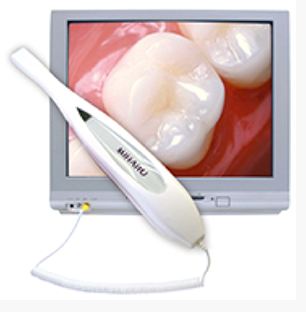Intraoral Camera
West Linn, OR
 Intraoral cameras represent a breakthrough in dental technology, providing a closer look at oral health than ever before. These small, handheld devices capture high-resolution images of the inside of the mouth, allowing dentists to identify issues with precision and accuracy. By magnifying the teeth and gums, intraoral cameras reveal details that may not be visible to the naked eye, such as cavities, plaque buildup, and early signs of gum disease. Intraoral cameras represent a breakthrough in dental technology, providing a closer look at oral health than ever before. These small, handheld devices capture high-resolution images of the inside of the mouth, allowing dentists to identify issues with precision and accuracy. By magnifying the teeth and gums, intraoral cameras reveal details that may not be visible to the naked eye, such as cavities, plaque buildup, and early signs of gum disease.
One of the benefits of intraoral cameras is their ability to enhance patient education. Dentists can display the captured images on a screen, enabling patients to see exactly what the dentist sees and better understand their oral health condition. This visual aid encourages patients to take a more active role in their dental care and helps them make informed decisions about treatment options.
Understanding Intraoral Camera Technology
Understanding intraoral camera technology revolutionizes dental diagnostics and patient care. These compact devices, resembling pens or wands, offer a close-up view of the oral cavity, capturing high-definition images in real-time. Utilizing advanced optics and lighting systems allows intraoral cameras to provide dental professionals with detailed visuals of teeth, gums, and other oral structures. The captured images are then displayed on a monitor, enabling dentists to identify dental issues with precision and clarity.
One aspect of intraoral cameras is their ability to enhance patient engagement and education. By visualizing their oral health conditions on-screen, patients gain a deeper understanding of their dental concerns, empowering them to make informed decisions about their treatment options. Intraoral cameras also facilitate better communication between dentists and patients, as they can clearly illustrate treatment recommendations and demonstrate the effectiveness of various procedures.
Intraoral camera technology streamlines the documentation process, allowing dentists to maintain comprehensive records of patients' oral health over time. These devices also support interdisciplinary collaboration by enabling dental professionals to easily share images with other healthcare providers for further consultation or referral.
Benefits of Intraoral Cameras in Dentistry
Intraoral cameras have become indispensable tools in modern dentistry, offering a multitude of benefits to both dental professionals and patients alike.
One of the primary advantages is enhanced diagnostics. These small, handheld devices capture high-resolution images of the oral cavity, providing dentists with a detailed view of teeth, gums, and other oral structures. By magnifying the area of interest, intraoral cameras enable dentists to identify dental issues such as cavities, cracks, and plaque buildup with greater precision than traditional methods alone.
Intraoral cameras enable improved patient communication and education. By displaying the captured images on a screen, dentists can visually explain oral health conditions to patients in real-time, empowering them to better understand their dental needs and treatment options. This visual aid not only enhances patient engagement but also encourages trust and confidence in the dental care provided.
These cameras also contribute to more efficient and effective treatment planning. Dentists can use the captured images to create personalized treatment plans tailored to each patient's specific needs. This targeted approach not only ensures optimal treatment outcomes but also minimizes the risk of complications during procedures.
Dentists can easily store and retrieve images for future reference, allowing for comprehensive tracking of patients' oral health over time. This not only streamlines administrative processes but also provides valuable insights into the progression of dental conditions and the effectiveness of treatment interventions.
Minimally Invasive Dentistry
Minimally invasive dentistry represents a paradigm shift in dental care, focusing on preserving as much of the natural tooth structure as possible while addressing dental issues. Unlike traditional approaches that may involve more aggressive interventions, MID emphasizes preventive measures and conservative treatments to maintain oral health.
One of the primary goals of minimally invasive dentistry is to prevent the progression of dental problems before they require extensive treatment. This may involve strategies such as regular dental cleanings, fluoride treatments, and sealants to strengthen tooth enamel and prevent decay.
When treatment is necessary, minimally invasive techniques prioritize the preservation of healthy tooth structure. For example, instead of removing large portions of the tooth for a filling, dentists may use techniques such as air abrasion or laser dentistry to remove only the decayed portion, leaving more of the tooth intact.
Advancements in materials and technology have also enabled minimally invasive approaches for procedures like dental implants and root canal therapy. These techniques minimize discomfort, reduce healing time, and often require less anesthesia compared to traditional methods.
Advancements in Tele-Dentistry
Advancements in tele-dentistry have ushered in a new era of dental care delivery, offering unprecedented convenience and accessibility to patients worldwide. Through tele-dentistry platforms, individuals can now engage with dental professionals remotely, accessing virtual consultations, assessments, and even treatment recommendations via video conferencing or digital communication channels.
This technology has proven especially beneficial for individuals in rural or underserved areas, as well as those with mobility limitations or transportation constraints who may otherwise struggle to access traditional dental services. Tele-dentistry also enables dental practitioners to collaborate more efficiently with other healthcare providers, encouraging interdisciplinary care and enhancing patient outcomes, particularly for those with complex medical needs.
With its ability to bridge geographical gaps and break down barriers to access, tele-dentistry represents a significant advancement in oral healthcare delivery, promising greater convenience, efficiency, and inclusivity for patients and providers alike in the digital age.
Emerging Trends in Intraoral Camera Development
Emerging trends in intraoral camera development are reshaping the landscape of dental diagnostics and patient care. One notable trend is the integration of artificial intelligence (AI) and machine learning algorithms into intraoral camera systems. These technologies analyze captured images in real-time, allowing for the automated detection of dental issues such as cavities, cracks, and lesions. This not only enhances diagnostic accuracy but also streamlines the treatment planning process, leading to more efficient patient care.
Another emerging trend is the miniaturization of intraoral cameras and the development of wireless and portable models. These advancements make intraoral cameras more versatile and accessible, allowing dental professionals to capture high-quality images with greater ease and convenience. Also, the incorporation of advanced imaging technologies such as 3D scanning and augmented reality into intraoral camera systems is revolutionizing treatment planning and patient communication.
Ready for a Dental Evaluation?
If you're seeking a comprehensive dental examination or specialized services, you can contact Roane Family Dental at (503) 657-1215.
|
